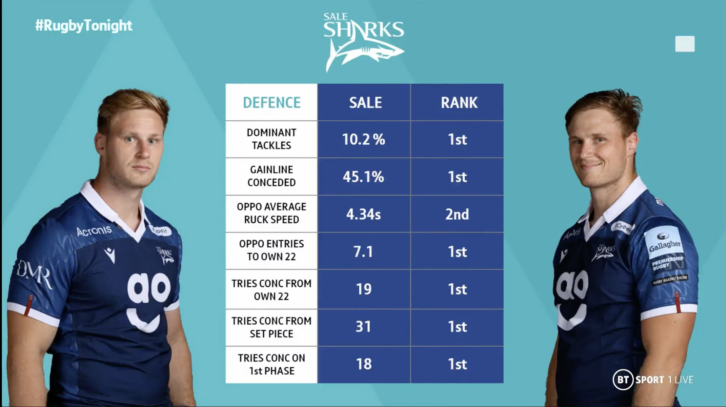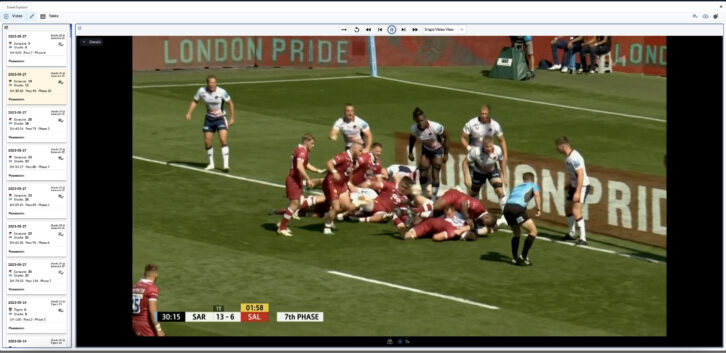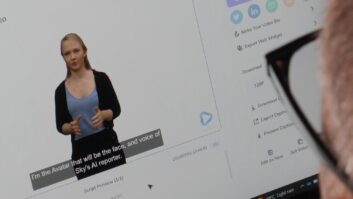Oval Insights, rugby’s leading data and analytics provider, is working with AWS on building machine learning models with data from every televised rugby union game to help take audiences deeper into what’s happening – including what they can’t see.
The company was born in 2017 when its co-founders were undertaking analytical projects for Eddie Jones, the former head coach of the England men’s rugby union team.
James Tozer, a data journalist at The Economist, and Gordon Hamilton-Fairley, who was working in corporate finance at Oakwell Sports Advisory, identified the need for advanced analytics in sport on both the performance side and the commercial side. They worked with Oval’s other co-founder Rob Lowe to develop machine learning models that could identify the best players, measure the quality of matches, and predict the outcome of tournaments.
Six years later, Oval employs 30 full-time staff, which can go grow to anywhere between 80 and 150 people, depending on the number of matches being played. The company is fully dedicated to rugby union and rugby league across both the men’s and women’s games, analyzing around 3,000 individual data points for every single match, to provide the raw material for its machine learning models.

It then uses AWS to store this data in a workable form and has built an ensemble of bespoke machine learning models on AWS, which works as a pipeline with the output from one model feeding into the next. All of this analysis runs on AWS, using Elastic Container Services (ECS) Instances, helping Oval generate more than 800 metrics for use by its wide range of customers.
Oval Insights currently provides TNT Sports with all of the data included in its Rugby Premiership coverage, including in-game win predictors, and predictions of the chances a kick will be successful., as well as deeper preparation packs for broadcasters and commentators.
TVBEurope caught up with the team at Oval to find out more about their machine learning models and how they can be used to enhance the broadcast experience.
How did you develop your AI insights for rugby union?
This was an iterative process; what started as a handful of pretty rough scripts knocked together by James, have evolved into production-grade data and model pipelines built according to best-in-class industry standards.
As Oval has evolved, so has the talent within the team, the depth and quality of the data collected, as well as the technical advancements made to the models themselves. This is all coupled with insights from subject matter experts like elite coaches, players, scouts and pundits who regularly use Oval’s products.
How integral was AWS’s technology to that development?
AWS was central to moving away from local, rudimentary code development to scalable, production-grade data and model pipelines. Oval uses a wide range of products and services from the AWS offering, ranging from data storage and query solutions, to model training and hosting facilities. It has also allowed us to automate a lot of processes which were very manual and time-consuming in nature when we first started up, meaning we’re able to deliver insights to our end users more reliably, more often, and more time-effectively than before. And we haven’t stopped just yet. We are constantly building our understanding and expertise within the AWS product suite as we continue to grow as a company.

How did you develop the graphics used by broadcasters and how are they integrated within the broadcast feed?
We work with the broadcasters and graphics providers to understand what stats and information tell the most compelling and insightful stories to the fans, and how best to deliver those. We then build custom API solutions to surface these stats to the graphics providers in the most efficient way possible. This is another area that AWS has been massively helpful.
Do you watch what AWS is doing with other sports (F1, Bundesliga) to get ideas for how you could develop your data further?
Yes, for sure! We have a very close relationship with our AWS product manager, Paul Devlin, who oversees a number of AWS client relationships within the sports industry, and he does a brilliant job of keeping us up to date with who is doing what with and on AWS and facilitating those networking opportunities.
The innovation AWS has supported in sports such as Formula 1 and the NFL has also provided a source of inspiration for our analytics and product development. There are a number of AI concepts in sport that are transferable and we’ve used a number of the predictive and descriptive outputs that are seen both in the performance and broadcast space as the foundation for the work we’ve developed in rugby. These sports have been at the forefront of innovation and although they may be further along in their data journeys than in rugby, particularly as they have deeper and richer data sets such as player tracking and engine performance data, Oval’s ambition is to drive the evolution of rugby to match the understanding of performance that those sports have achieved.
How could you develop your use of data to help viewers understand what’s happening in a match even further?
Rugby is still early in its analytics journey but it has been exciting to see the enthusiasm and hunger to evolve that exists across the sport, everywhere from the coaches and players, to the leagues that structure and manage the game, and the fans that watch and engage with the content we create. We continue to push the boundaries of what is possible by working with coaches to quantify the way they build game plans and styles of play and how they identify and project talent. Rugby can also be a complex game so we are continually working on ways to explain the game better to fans so they can understand the “why and how” of the performances they see on the pitch. This can come in the form of extending the interactivity of broadcasts or the development of further gamification opportunities.
This has untapped potential in rugby and will rely heavily on the way we can evolve the types of data we collect through the use of advanced player and ball tracking technologies as well as furthering our use of AI capabilities to merge data sets, study patterns and simulate and project performance. All of this will not only influence those coaches but give fans a deeper understanding of how incredible the athletic capabilities of our rugby players truly are.






